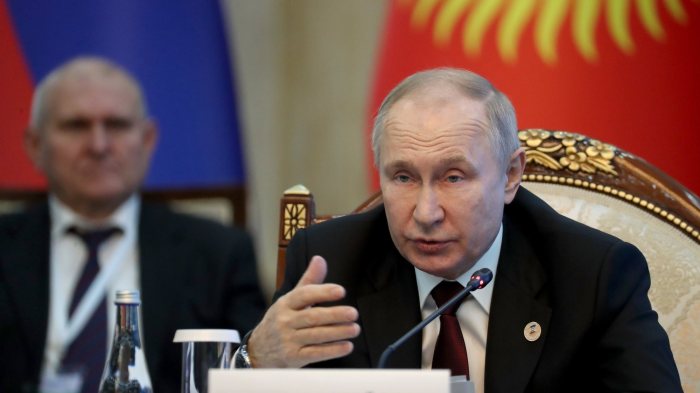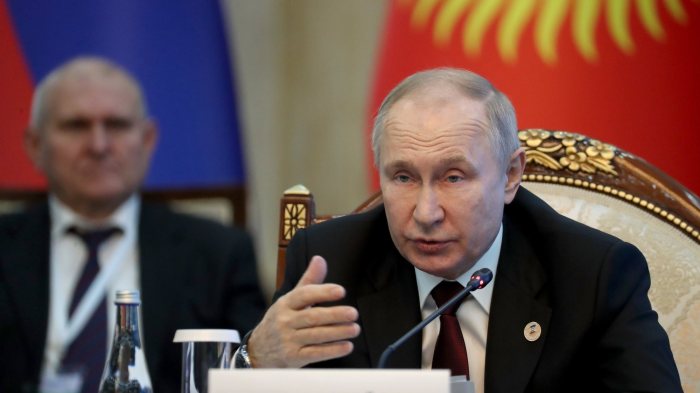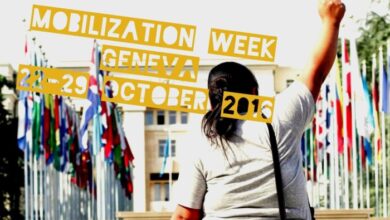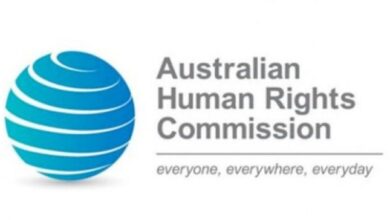
Rights of the Child: A Journey Through History and Progress
Rights of the child are a fundamental aspect of human rights, encompassing the protection and well-being of children throughout their development. This exploration delves into the historical context of child rights, examining how societal views and legal frameworks have evolved over time to ensure children’s rights are recognized and upheld.
From ancient civilizations to the present day, the concept of child rights has undergone a significant transformation, shaped by influential figures, international organizations, and evolving societal norms.
The journey begins by tracing the origins of child rights, highlighting key historical events and figures that played a pivotal role in shaping the understanding of children’s needs and rights. It then examines the international legal framework, focusing on the UN Convention on the Rights of the Child (CRC) and its impact on safeguarding children worldwide.
The CRC, ratified by nearly every nation, sets forth a comprehensive set of rights that guide the protection and promotion of child well-being.
Historical Context of Child Rights

The concept of child rights has evolved over centuries, reflecting changing societal values and understanding of childhood. While children were once viewed as property or miniature adults, the recognition of their unique needs and vulnerabilities has led to a gradual shift towards acknowledging their inherent rights.
Protecting children’s rights is a fundamental responsibility, but sometimes, those rights can be overshadowed by larger geopolitical concerns. The pursuit of military expansion serving economic objectives can lead to instability and conflict, directly impacting vulnerable populations, especially children, who are often the most affected by the consequences of war and displacement.
Ancient Times and Medieval Era
The earliest notions of child protection can be traced back to ancient civilizations. For instance, in ancient Rome, laws existed to protect children from abuse and neglect. However, these protections were often limited to the upper classes and did not encompass all children.
During the Middle Ages, children were primarily seen as economic assets, with many working in harsh conditions.
The rights of the child are fundamental to a just society, ensuring that every young person has the opportunity to thrive. It’s crucial to remember that these rights extend beyond basic needs and encompass protection from harm, access to education, and participation in decision-making processes that affect their lives.
This brings to mind the question of whether the Office of Strategic Influence, which aimed to influence public opinion through covert means, is truly gone, as explored in this article: is office of strategic influence gone. While the focus of that organization was on adult audiences, the potential for manipulation and misinformation raises concerns about how it could impact children’s understanding of the world and their ability to exercise their rights.
The Enlightenment and Industrial Revolution
The Enlightenment period, with its emphasis on reason and individual rights, brought about a renewed focus on children’s well-being. Philosophers like John Locke argued that children were not simply miniature adults but individuals with their own rights and needs. The Industrial Revolution, however, brought about new challenges for children as they were increasingly employed in factories under dangerous and exploitative conditions.
Protecting children’s rights is a global imperative, and understanding the unique challenges faced by children in different regions is crucial. The Middle East, for example, presents a complex landscape where cultural norms, political instability, and ongoing conflicts can impact the lives of young people.
For a deeper dive into the intricacies of this region and its implications for children’s rights, more information on the middle east is available. By understanding the context, we can better advocate for the well-being and development of children everywhere.
The 20th Century: Rise of International Child Rights
The 20th century witnessed a significant shift towards recognizing children as rights-holders. The horrors of World War II, which saw widespread exploitation and abuse of children, spurred international efforts to protect them.
The Role of International Organizations, Rights of the child
International organizations have played a crucial role in shaping the discourse and implementation of child rights. The League of Nations, established after World War I, was the first international body to address children’s issues. The United Nations (UN) continued this work, culminating in the adoption of the Convention on the Rights of the Child (CRC)in 1989.
This landmark treaty, ratified by nearly every country in the world, sets out a comprehensive framework for protecting and promoting the rights of all children.
International Legal Framework for Child Rights: Rights Of The Child

The international legal framework for child rights is a complex and evolving system of treaties, conventions, and customary international law that aims to protect and promote the rights of children worldwide. The most significant document in this framework is the UN Convention on the Rights of the Child (CRC), which has been ratified by almost every country in the world.
Key Provisions of the UN Convention on the Rights of the Child
The CRC Artikels a comprehensive set of rights for children, covering various aspects of their lives, including:
- Survival and Development:The CRC emphasizes the right to life, survival, and development, ensuring that children have access to basic necessities such as food, shelter, healthcare, and education. This right is further elaborated in other treaties like the Convention on the Elimination of All Forms of Discrimination against Women (CEDAW) and the Convention on the Rights of Persons with Disabilities (CRPD).
- Non-discrimination:The CRC prohibits discrimination against children based on race, color, sex, language, religion, political or other opinion, national or social origin, property, birth, or other status. This principle is also reflected in other human rights treaties, such as the International Covenant on Civil and Political Rights (ICCPR) and the International Covenant on Economic, Social and Cultural Rights (ICESCR).
- Best Interests of the Child:The CRC emphasizes the principle of the best interests of the child, stating that all actions concerning children should be primarily guided by what is best for their well-being. This principle is further elaborated in the Hague Convention on the Civil Aspects of International Child Abduction, which focuses on protecting children from wrongful removal or retention across international borders.
- Protection from Abuse and Exploitation:The CRC specifically addresses the protection of children from all forms of abuse, exploitation, and violence, including physical, sexual, and psychological abuse. This is further reinforced by the Optional Protocol to the CRC on the sale of children, child prostitution and child pornography.
- Participation and Expression:The CRC recognizes the right of children to participate in matters that affect them, including the right to express their views freely. This right is also acknowledged in the African Charter on the Rights and Welfare of the Child, which specifically addresses children’s right to participate in family and community life.
Significance of the CRC in Protecting and Promoting Child Rights
The CRC has played a pivotal role in shaping global attitudes towards children and has been instrumental in:
- Setting a universal standard for child rights:The CRC provides a common framework for countries to uphold and promote child rights, ensuring that all children are treated with dignity and respect. This has led to significant improvements in the lives of children worldwide, particularly in areas like education, healthcare, and protection from exploitation.
- Providing a legal basis for advocacy and monitoring:The CRC provides a legal basis for advocacy groups and organizations to hold governments accountable for their commitments to child rights. The CRC’s monitoring mechanisms, including the Committee on the Rights of the Child, have been instrumental in identifying and addressing violations of child rights.
- Promoting awareness and understanding of child rights:The CRC has raised awareness of child rights issues and has encouraged a shift in perspectives towards children, recognizing their rights and needs as individuals.
Comparison and Contrast of the CRC with Other Relevant International Human Rights Treaties
The CRC is not the only international legal instrument that addresses child rights. Other relevant treaties include:
- CEDAW:While CEDAW focuses on eliminating discrimination against women, it also includes provisions relevant to girls’ rights, such as their right to education and protection from violence.
- CRPD:The CRPD recognizes the rights of persons with disabilities, including children with disabilities, and calls for their inclusion and participation in society. This treaty further emphasizes the need for equal opportunities and non-discrimination for children with disabilities.
- ICCPR and ICESCR:These treaties address a broader range of human rights, including civil, political, economic, social, and cultural rights, many of which are relevant to children. However, the CRC provides a specific and comprehensive framework for child rights.
Fundamental Child Rights
The Convention on the Rights of the Child (CRC) is a landmark international treaty that establishes a comprehensive framework for the protection and promotion of children’s rights. At its core, the CRC Artikels fundamental rights that are essential for a child’s survival, development, and well-being.
These rights are interconnected and interdependent, ensuring that children can thrive in a safe and nurturing environment.
Right to Life, Survival, and Development
The right to life, survival, and development is a fundamental human right that applies to all children. This right encompasses various aspects, including:
- Protection from all forms of violence, abuse, and neglect:Children have the right to live free from harm, including physical, emotional, and sexual abuse. This right emphasizes the importance of creating a safe and protective environment for children, both at home and in their communities.
- Access to essential healthcare services:Children have the right to access quality healthcare services, including preventive care, treatment, and rehabilitation. This right ensures that children have the opportunity to live healthy and fulfilling lives.
- Access to adequate nutrition:Children have the right to adequate nutrition, which is essential for their physical and cognitive development. This right requires addressing issues like food insecurity and malnutrition, ensuring that all children have access to nutritious food.
- Access to safe and clean water:Children have the right to access safe and clean water, which is essential for their health and well-being. This right highlights the importance of sanitation and hygiene practices to prevent waterborne diseases.
Right to Education
Education is a fundamental right that empowers children to reach their full potential and contribute to society. The CRC recognizes the right of every child to access quality education, including:
- Free and compulsory primary education:Children have the right to receive free and compulsory primary education, which is essential for their cognitive development, social skills, and future opportunities.
- Access to secondary and higher education:Children have the right to access secondary and higher education, which expands their knowledge and skills, opening doors to further opportunities.
- Quality education that is relevant to children’s needs:Children have the right to receive quality education that is relevant to their needs and interests, ensuring that they are engaged and motivated learners.
- Protection from discrimination in education:Children have the right to be protected from discrimination in education, ensuring that all children have equal opportunities to learn and succeed.
Right to Protection from Exploitation
Children are particularly vulnerable to exploitation, which can have devastating consequences for their physical, emotional, and social development. The CRC emphasizes the importance of protecting children from all forms of exploitation, including:
- Protection from child labor:Children have the right to be protected from child labor, which can be harmful to their health, safety, and education. This right emphasizes the importance of providing children with opportunities for education and development rather than engaging them in hazardous work.
- Protection from sexual exploitation and abuse:Children have the right to be protected from sexual exploitation and abuse, which can have lasting and devastating consequences for their well-being. This right underscores the need for strong legal frameworks and protective measures to prevent and address such abuse.
- Protection from trafficking:Children have the right to be protected from trafficking, which can expose them to exploitation, abuse, and forced labor. This right requires international cooperation and strong measures to prevent trafficking and provide support to victims.
Right to Identity and Nationality
Every child has the right to an identity and nationality, which are essential for their legal recognition and protection. The CRC recognizes the right of children to:
- Be registered at birth:Children have the right to be registered at birth, which provides them with legal recognition and access to essential services. This right emphasizes the importance of ensuring that all children are accounted for and have a legal identity.
- Have a name and nationality:Children have the right to have a name and nationality, which are essential for their identity and social integration. This right ensures that children are recognized as members of society and have the rights and protections associated with citizenship.
- Protection from statelessness:Children have the right to be protected from statelessness, which can leave them vulnerable to discrimination and exploitation. This right emphasizes the importance of ensuring that all children have a nationality and are not left without legal protection.
Right to Family Life
The CRC recognizes the importance of family life for a child’s well-being and development. This right encompasses various aspects, including:
- The right to live with their parents:Children have the right to live with their parents, unless it is harmful to their well-being. This right emphasizes the importance of providing children with a loving and supportive family environment.
- The right to be protected from separation from their parents:Children have the right to be protected from separation from their parents, unless it is necessary for their protection or well-being. This right highlights the importance of minimizing the disruption of family life for children.
- The right to contact with their parents:Children have the right to maintain contact with their parents, even if they are separated or living in different countries. This right emphasizes the importance of preserving family ties and ensuring that children have access to parental love and support.
Right to Participate
Children have the right to participate in decisions that affect their lives, which is essential for their development and empowerment. The CRC recognizes the right of children to:
- Express their views:Children have the right to express their views freely and openly, and to have those views considered in decisions that affect them. This right emphasizes the importance of listening to children’s perspectives and taking their opinions seriously.
- Be heard in legal proceedings:Children have the right to be heard in legal proceedings that affect them, ensuring that their voices are considered in matters that concern their well-being.
- Be informed about their rights:Children have the right to be informed about their rights, which empowers them to understand their entitlements and advocate for themselves.
Right to Protection from Discrimination
All children are entitled to equal rights and opportunities, regardless of their race, ethnicity, gender, religion, disability, or any other status. The CRC prohibits discrimination against children in all areas of life, including:
- Access to education:Children have the right to access education without discrimination, ensuring that all children have equal opportunities to learn and succeed.
- Access to healthcare:Children have the right to access healthcare without discrimination, ensuring that all children have equal access to quality medical care.
- Protection from abuse and neglect:Children have the right to be protected from abuse and neglect without discrimination, ensuring that all children are treated with respect and dignity.
Right to Play and Recreation
Play and recreation are essential for a child’s physical, emotional, and social development. The CRC recognizes the right of children to:
- Engage in play and leisure activities:Children have the right to engage in play and leisure activities, which are essential for their creativity, imagination, and social skills.
- Access to safe and appropriate play spaces:Children have the right to access safe and appropriate play spaces, ensuring that they have opportunities for physical activity and social interaction.
- Protection from exploitation in play and recreation:Children have the right to be protected from exploitation in play and recreation, ensuring that their leisure time is safe and enjoyable.






